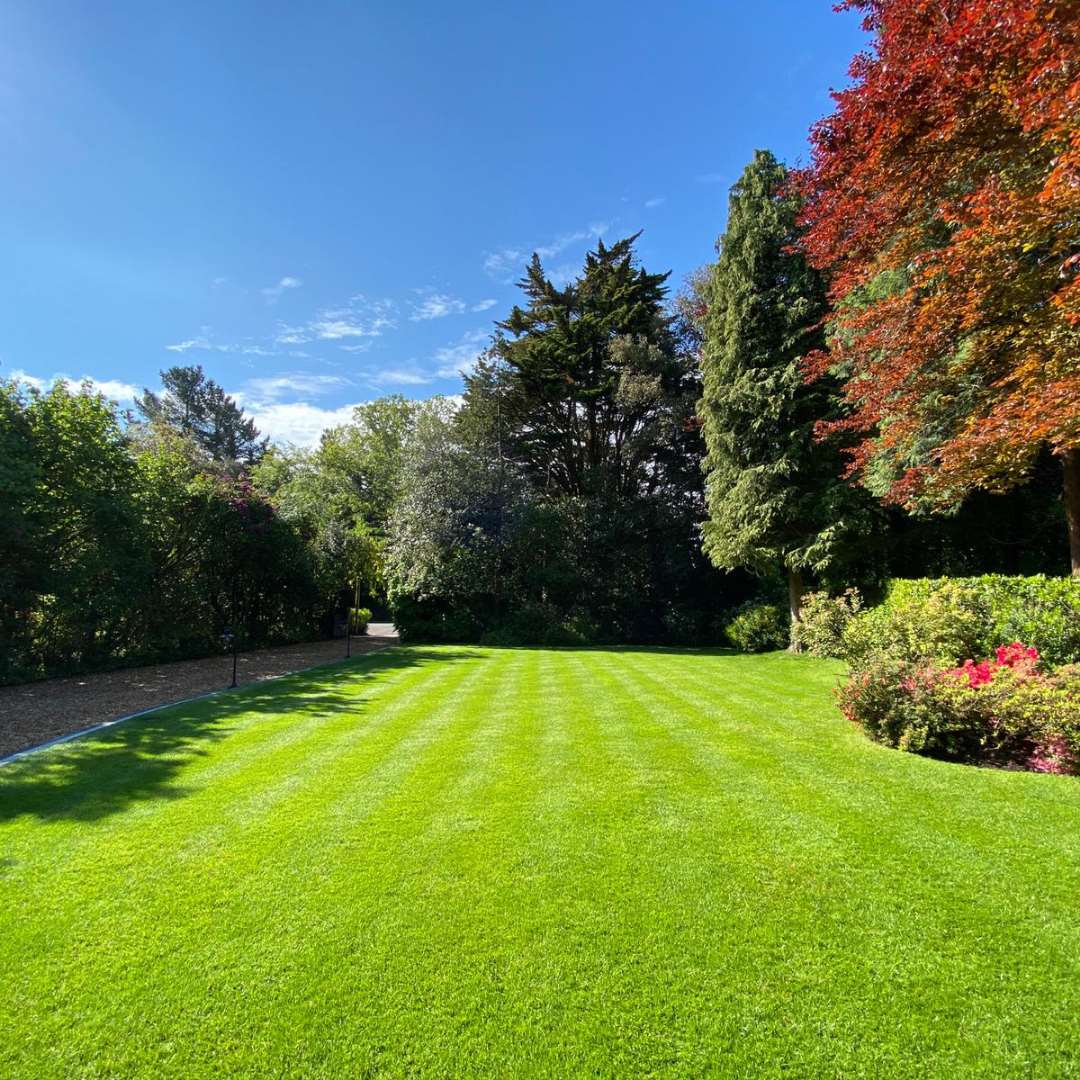For lawns that are tired and in need of regeneration, over-seeding will not only improve your lawn’s appearance but also enhance disease resistance and build better tolerance to environmental stress for a thicker, healthier lawn. So, if you have recently had over-seeding carried out by Lawntech, it’s likely that you are eagerly waiting to see signs of growth.
Over-seeding process

At Lawntech we carry out over-seeding or direct drill over-seeding to improve your lawn’s density and health. Over-seeding is typically applied following aeration or as part of a lawn renovation (scarification, aeration, and over-seeding) to create the perfect seedbed for germination.
Regenerate your lawn

Over-seeding will regenerate a thin and unhealthy-looking lawn for a green and vibrant landscape. However, it’s important to remember that the germination rate varies as this depends heavily on factors such as soil temperature, moisture and grass type. Warm soil and plenty of moisture are the perfect conditions to establish successful growth.
Can I walk on my lawn after over-seeding?
Yes, but keep off as much as you can to avoid disrupting the seeds.
Can my dog go on the lawn after over-seeding?
This is tricky, ideally not, but we realise your furry friends need to stretch their legs and toilet. Bigger dogs or those that like to dig are likely to cause more severe damage than those little pooches with light feet! We (also) recommend that dogs don’t urinate on lawns, wherever possible, as they can cause scorch patches. We are very sorry to say that there is no easy answer to this.
Should I water my lawn after over-seeding?
In most cases for autumn over-seeding we would say don’t water and instead wait for rain, because the new seed will sit and wait for rain to arrive. If conditions are dry, and there is no forecast of steady rain then we recommend watering at least once per day with a hosepipe or sprinkler. If you do start watering, it is essential to be consistent and keep the lawn constantly damp or the newly emerging seedlings will die. Lawns that have had over-seeding in spring are more likely to need watering.
How long will the seed take to germinate?
Generally, this can take a few weeks to see the first signs of growth, but this will vary depending on soil temperature, weather conditions, moisture, and grass type. If your lawn currently benefits from our annual lawn care treatment programme, your technician will assess your lawn’s condition and top up seed during your next treatment visit if this is required. To give your lawn time to establish, your next treatment visit will be between six to ten weeks after over-seeding.
When should I mow my lawn after over-seeding?
To give newly sown seed the best chance of germination it is best to wait a few weeks before mowing, we usually advise to start mowing once the grass gets to a maximum of 75mm (3 inches) long. It is important to mow on a high setting to start with and then gradually lower the height of the cut down to around 25mm (1 inch) over several weeks.
Birds are pecking at my lawn, how will this affect the seed?
Naturally, seeds make a tasty treat for birds and at Lawntech, we apply over-seed at a high enough rate to take this into account so that the majority of the seed that sits in the holes of your lawn will not be affected for successful germination. If your lawn currently benefits from our annual lawn care treatment programme, your technician will assess your lawn’s condition and top up seed during your next treatment visit if this is required. To give your lawn time to establish, your next treatment visit will be between six to ten weeks after over-seeding.
What type of seed is used for my lawn?
At Lawntech we use a Rye & Fescue mix but the exact specification will have been determined by your technician to decide which type of seed will blend best with your existing grass.
Why can’t I see the seed in my lawn?
Lawntech carries out over-seeding in various ways depending on the type and size of the lawn. If you have had direct drill over-seeding, the seed will have been drilled into the sward so the seed will not be visible.
Can my lawn have its usual weed and/or moss treatment after overseeding?
Herbicide and moss treatments may be delayed after over-seeding as we need to allow some time for the new grass to be established. The grass plants need to have established enough strength to withstand these treatments.
Why is my lawn patchy?
It is normal for the seed to be germinating at different rates in your lawn with some areas sprouting sooner than others depending on the amount of moisture, shade and soil conditions.
Should I remove fallen leaves and debris from my lawn?
Yes, fallen leaves and debris can block the moisture the seed needs to establish. Gently raking the leaves using a plastic fan rake without dragging the rake along the soil depth or blowing at a horizontal level and not directly on the ground, is the best approach to removing leaves and debris carefully.
